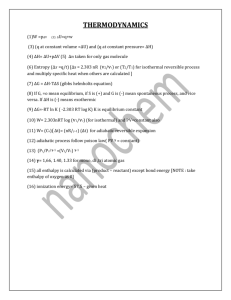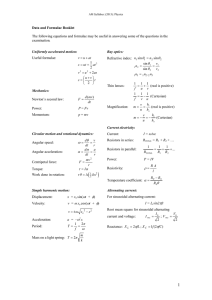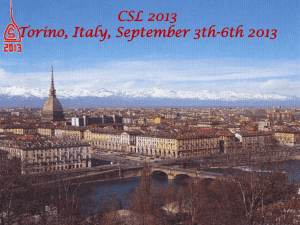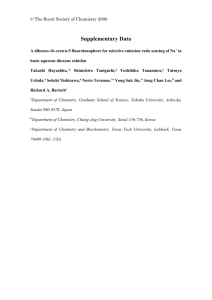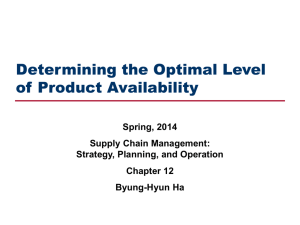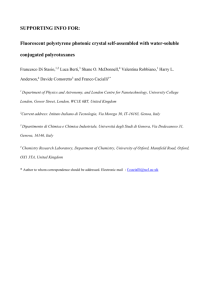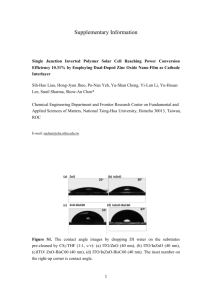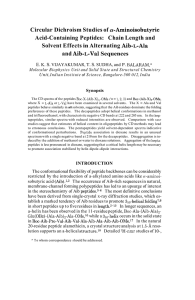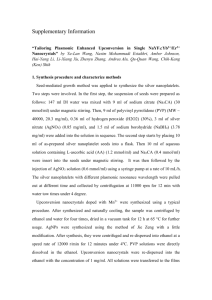Supplementary Material
advertisement
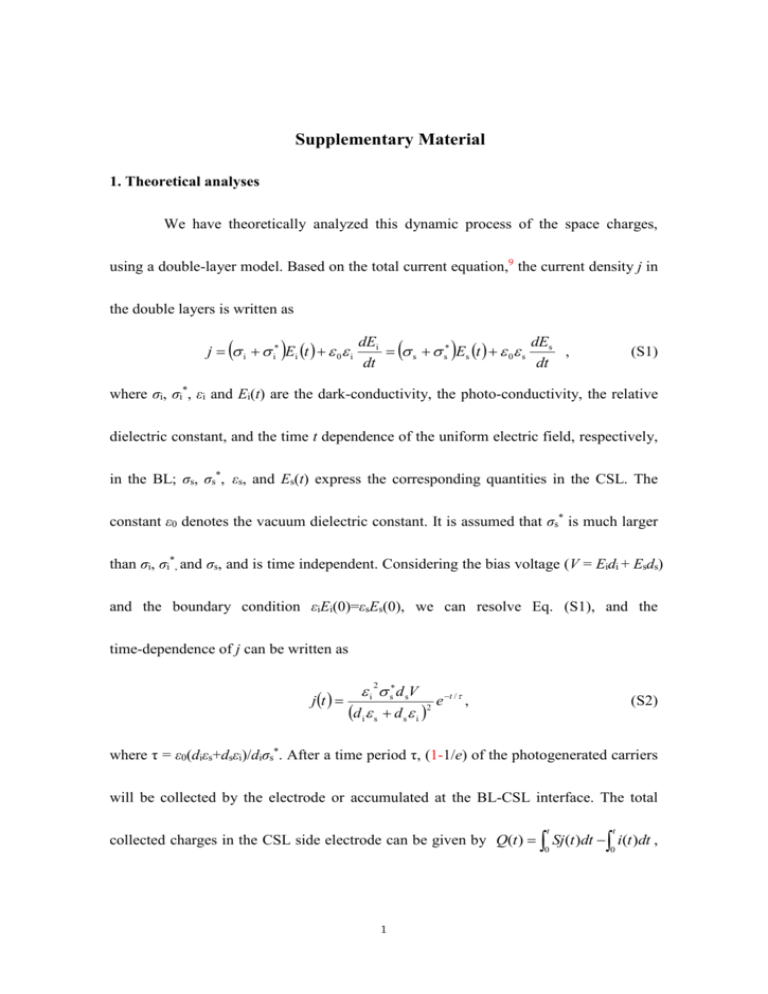
Supplementary Material 1. Theoretical analyses We have theoretically analyzed this dynamic process of the space charges, using a double-layer model. Based on the total current equation,9 the current density j in the double layers is written as j i i Ei t 0 i dE dEi s s Es t 0 s s , dt dt (S1) where σi, σi*, εi and Ei(t) are the dark-conductivity, the photo-conductivity, the relative dielectric constant, and the time t dependence of the uniform electric field, respectively, in the BL; σs, σs*, εs, and Es(t) express the corresponding quantities in the CSL. The constant ε0 denotes the vacuum dielectric constant. It is assumed that σs* is much larger than σi, σi*, and σs, and is time independent. Considering the bias voltage (V = Eidi + Esds) and the boundary condition εiEi(0)=εsEs(0), we can resolve Eq. (S1), and the time-dependence of j can be written as i 2 s d sV j t e t / , d i s d s i 2 (S2) where τ = ε0(diεs+dsεi)/diσs*. After a time period τ, (1-1/e) of the photogenerated carriers will be collected by the electrode or accumulated at the BL-CSL interface. The total t t 0 0 collected charges in the CSL side electrode can be given by Q(t ) Sj (t )dt i(t )dt , 1 where i(t) is the current in the external circuit and S is the effective area of the photocell. Since the voltage drop across load resistor R is equal to that across the photocell, Sj t dt i(t )dt , i (t ) R t t 0 0 (S3) C where C is the capacitance of the photocell. Considering that the initial current i(0)=0, Eq.(3) can be resolved and the external photocurrent is expressed as i t t t S RC e e , RC (1) where ξ = ε0εi2dsV/di(diεs+dsεi). Therefore, after a rise time τR, namely t R RC RCI ln , RCI (S5) with κ = τI = ε0(diεs+dsεi)/diΦ, where I is the light intensity which keeps a constant during light illumination and Φ is a proportional constant of σs* =ΦI, the largest current density Jtr0 can be achieved, which is expressed as J tr 0 RC RC 2 RC RC RC 1 . (2) 2. Supplementary Figure Figure S1 (a) Photoresponses of an ITO/PVDF (1 µm)/ZnPc:C60 (30 nm)/Al photocell with a light modulation of 1 kHz (31.8 mW/cm2). The slow response is mainly determined by the large resistance in the circuit (105 Ω), i.e., a large RC time constant that determines the slow response time which is more easy to detect and simulate. Another reason comes from the thicker CSL (30 nm) which induces a larger carrier transit time. Therefore, we studied the response time in a circuit with a smaller RC time constant and a device with a thinner CSL (20 nm) in Fig 4. (b) A comparison between the absorption spectra of the blend films (blue curve) and the photocurrent-action 3 spectra of the photocell (red curve). The latter spectra were detected by lock-in techniques with a 500-W halogen lamp which was employed as light source. The monochromated light was chopped with a frequency of 17.0 Hz and illuminated to the transparent ITO electrode. Signals were detected by a two phase lock-in amplifier (NF Electronic Instruments 5610B). Then the photocurrent-action spectra were normalized with the photon number. The peaks in these spectra are in agreement, indicating that the CSL plays a primary role in the production of TPC. It is notable that no signals were obtained in the ITO/PVDF/Al structure, suggesting that only the CSL was the sensitive component. In addition, it was found that the relationship between TPC and weak light intensity exhibits linearity. 4
